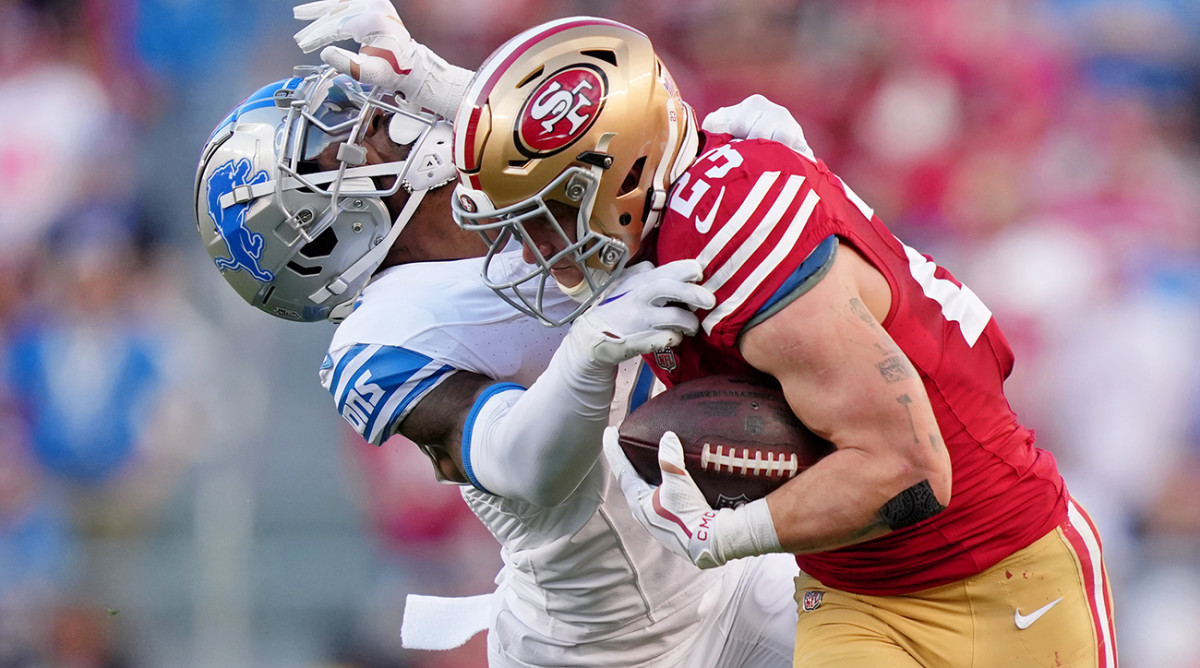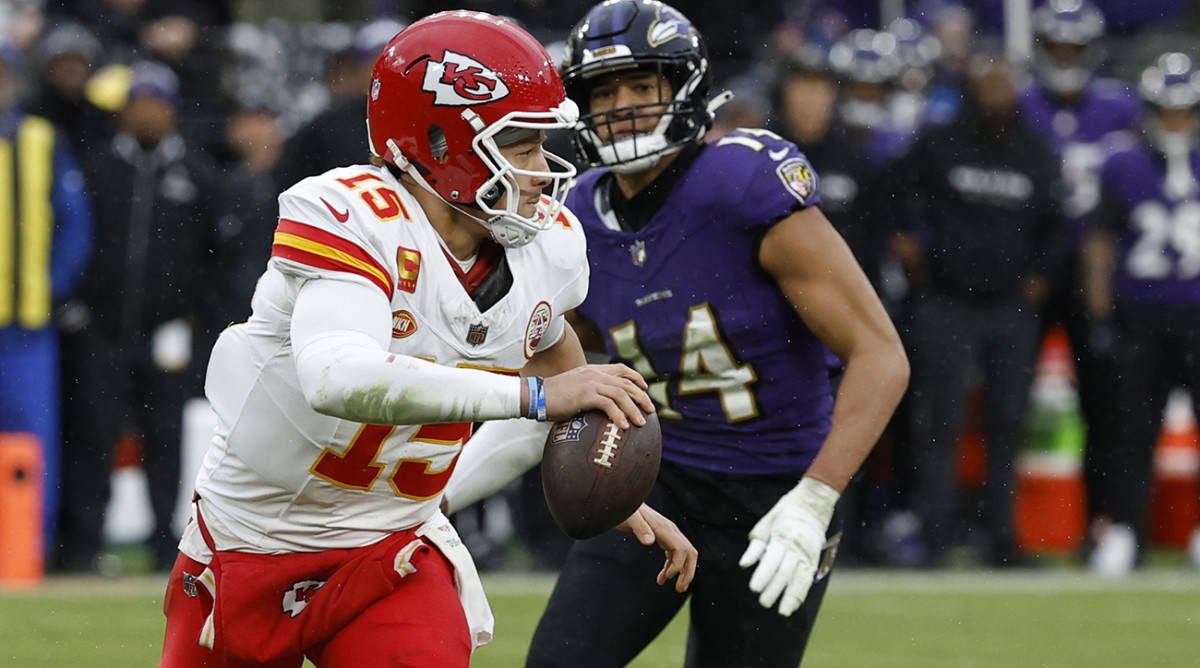The Defining Matchups for Super Bowl LVIII
We’ve arrived. It’s the San Francisco 49ers and the Kansas City Chiefs in Super Bowl LVIII.
For the Chiefs, this is old hat. Kansas City has been to the Super Bowl four of the past five seasons. Patrick Mahomes and his cohorts are looking to bring the Chiefs their third title over that span, marking them as an unquestioned dynasty.
For the Niners, it’s about finally cashing in on such a rich stretch. Like Kansas City, San Francisco has been a force over the past half-decade, reaching four NFC championship games in that time. However, the 49ers have reached the Super Bowl only twice, with the first time being a loss to the Chiefs in the 2019 campaign.
So what will determine who raises the Lombardi Trophy this time around? We’ll look at four distinct matchups, featuring advantages and disadvantages for each of the four main units we’ll see Sunday.
When the 49ers Have the Ball
Key matchup #1: Christian McCaffrey vs. Chiefs’ run defense

This comes as no surprise. McCaffrey won the NFL rushing title going away, amassing 1,459 yards. He’s the main cog in San Francisco’s ground game, which finished fourth during the regular season with 4.8 yards per carry.
For the Chiefs, this is a problem spot. Kansas City allowed 4.5 YPC, tied for 24th in the league. As a result, look for San Francisco coach Kyle Shanahan to probe this area early and often.
However, the Chiefs are good tacklers across the board. They missed only 76 tackles, ranking sixth-best. They can’t afford to allow McCaffrey to get into space, and bringing him down on first contact will be key. That’s no easy task with the All-Pro, who finished tied for sixth with 2.2 yards after contact per rush.
Key matchup #2: Brock Purdy’s accuracy vs. Chiefs’ secondary
If there’s one issue with Purdy that has persisted throughout the season, it’s his bouts with inaccuracy.
While largely playing quality football in 2023, Purdy finished 21st among qualifying quarterbacks in bad throw percentage at 16.3%. Additionally, his on-target rate was tied for a middling 15th alongside Geno Smith and Desmond Ridder.
Against Kansas City’s ultra-talented secondary featuring corners L’Jarius Sneed and All-Pro Trent McDuffie, alongside safety Justin Reid, both figures could prove problematic.
This is especially true if coordinator Steve Spagnuolo’s blitz-heavy scheme gets home, putting Purdy under additional pressure in the biggest game of his life.
When the Chiefs Have the Ball
Key matchup #1: Patrick Mahomes’ awareness vs. 49ers’ front

Mahomes has been a wizard for years when it comes to avoiding sacks. Over his six seasons as a starter, the Chiefs have ranked fifth, fourth, fourth, third, second and second, respectively, in sack rate against.
While this year’s Niners have Nick Bosa, Javon Hargrave, Chase Young and Arik Armstead, the numbers aren’t overwhelming. San Francisco is tied for seventh with 48 sacks, but only 17 in pressure rate at 21%. The 49ers are also 27th in hurry rate at 5.4%.
Getting near Mahomes isn’t enough. San Francisco must consistently draw penalties on the tackles or actually bring Mahomes down. Otherwise, Kansas City’s offense will move the ball in chunks, both scripted and unscripted.
Key matchup #2: Chiefs’ receivers vs. 49ers’ zone scheme
If there’s a way to slow down Mahomes, perhaps it lies in how San Francisco plays.
Although Mahomes is capable of thrashing zone defenses, the 49ers have done a terrific job of limiting big plays. In fact, San Francisco permits only 9.6 yards per reception, best in football. Under defensive coordinator Steve Wilks, the Niners play a lot of single-high zone, keeping everything in front of them before rallying to tackle.
Meanwhile, the Chiefs rank a paltry 24th at 10.4 yards per catch mostly due to underwhelming pass-catchers save for rookie Rashee Rice and star tight end Travis Kelce.
If San Francisco can keep Rice and Kelce from torching its zones while tackling well—something it ranked second-best in during the year—the 49ers will force the Chiefs to execute across long drives.
